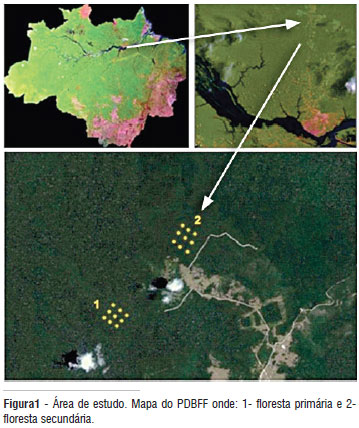Rates of deforestation in the Brazilian Amazon have increased since 1991 and forecasts are not optimistic about the slowing of this process. Some authors believe that the Amazon may be experiencing a massive process of species extinction. However, the deforestation is accompanied by the expansion of secondary forests that are established in the abandoned areas. The trend is an increase in secondary forests cover, resulting in a mosaic of primary forest (FP) and fragments separated by an array of secondary forests (FS). In this scenario, the prediction of a massive extinction could be wrong if many species could survive in the secondary forests. To assess the importance of FS for the understory birds we sampled areas in regeneration and a continuous forest of a fragmented landscape. We conducted mist netting (24 nets/day) for six consecutive days/month, for 8 months (May-November) in 2009. Some forest species as do not seem to be adapted to the secondary forest environment and their occurrences are restricted to continuous forest environments. But most focal species showed no significant difference in apparent survival rates between the enviroments, suggesting that these species inhabit the secondary forest and the primary forest similarly. Because most of the matrix in fragmented landscapes are composed by secondary forests, such results highlights the conservation value that these habitats present in the long term. Thus, FS should be regarded as dynamic matrix that not only allows the movement of individuals but also function as habitat for many species typical of FP.
Secondary forest; apparent survive; avian conservation








